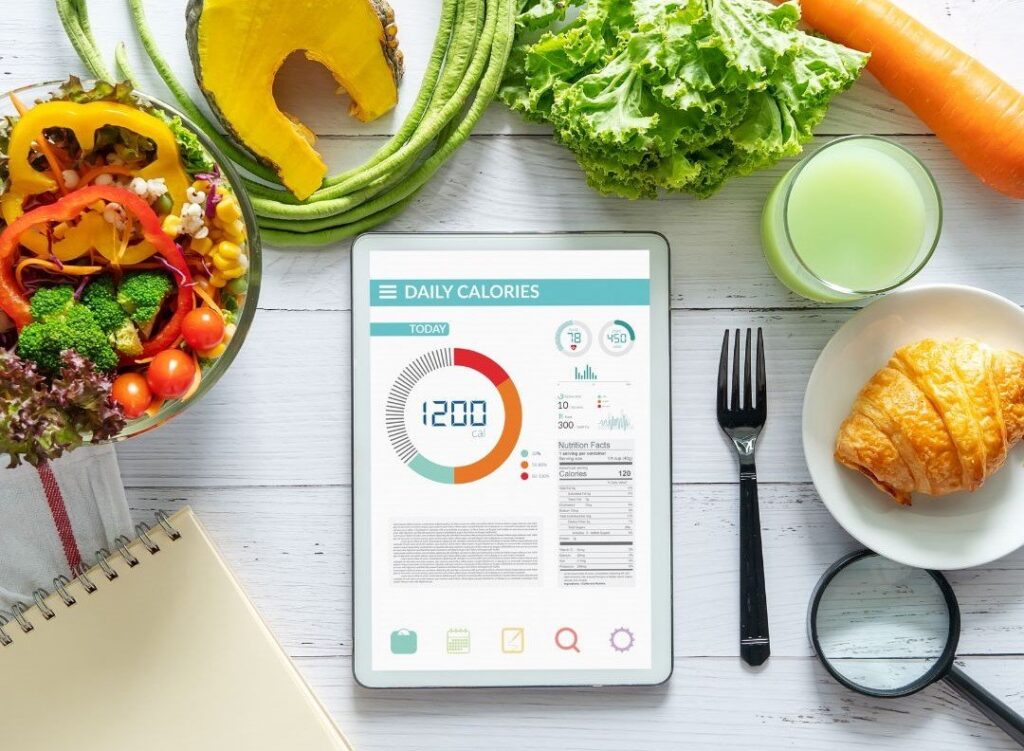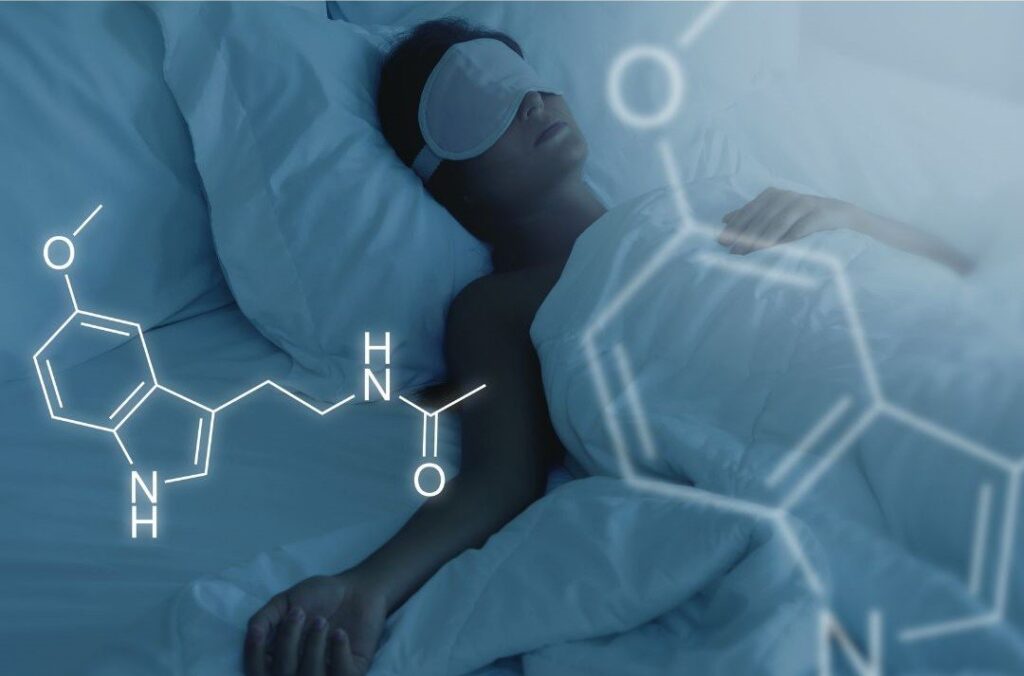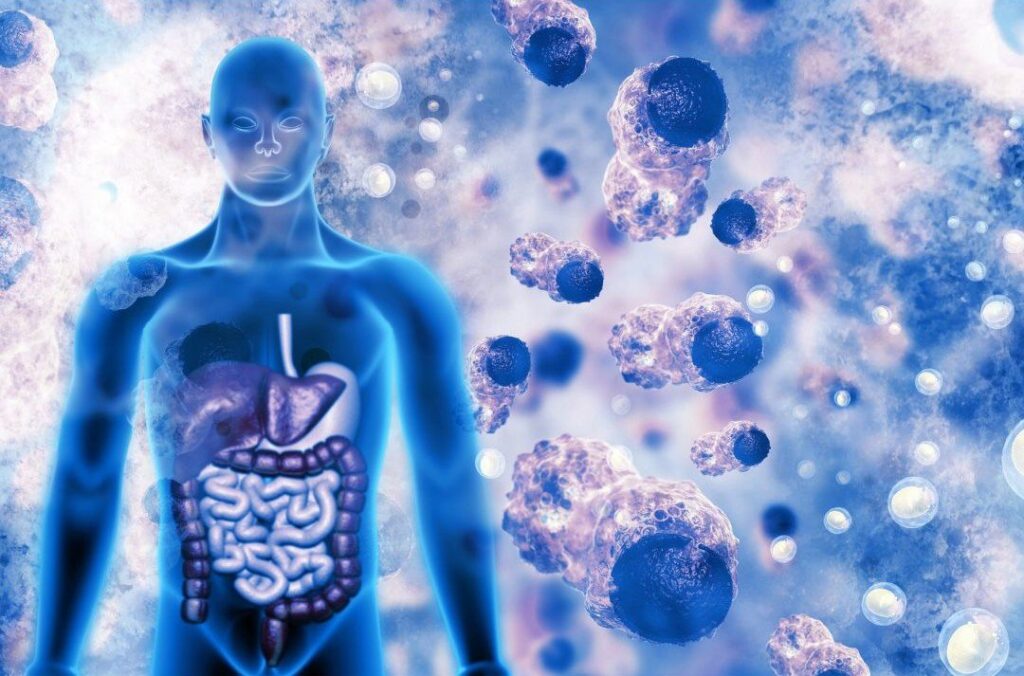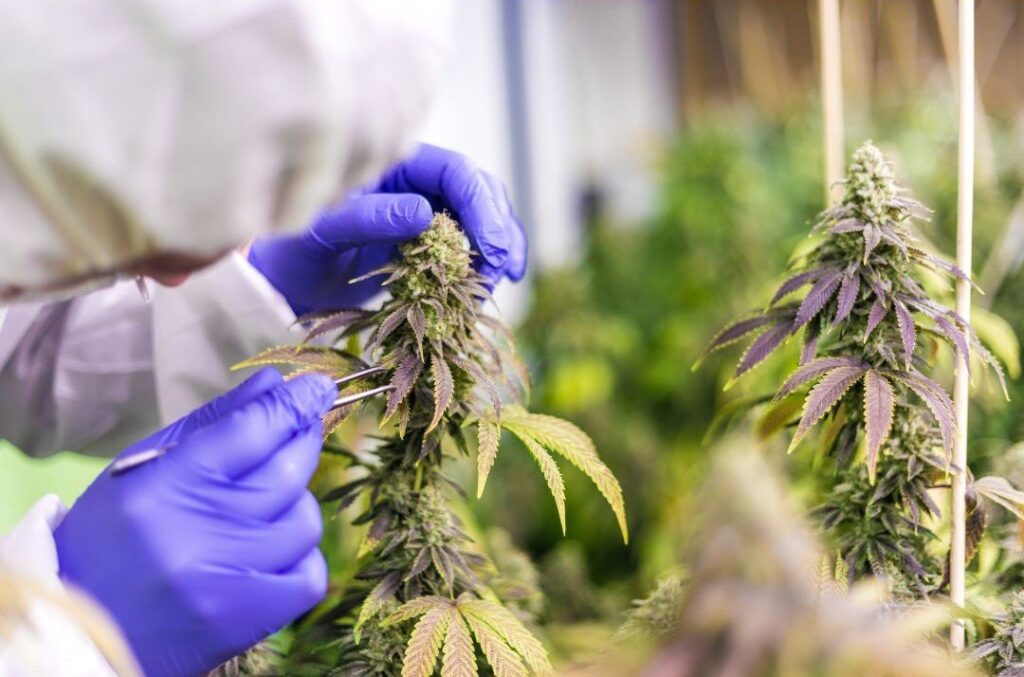How to Unlock the Secrets to Weight Loss and Why Quality of Calories Matters More Than Quantity

Exciting read for anyone on a weight loss journey! Understanding how different foods impact your body can revolutionize your health and weight management. article Home Article How to Unlock the Secrets to Weight Loss and Why Quality of Calories Matters More Than Quantity Hey there! If you’ve ever felt confused about weight loss, you’re not alone. There’s a ton of advice out there, and it can be hard to know what really works. Today, we’re going to simplify things and focus on a key principle: not all calories are created equal. Understanding this can be a game-changer for your health and weight loss journey! For a long time, we were told that losing weight is all about eating fewer calories than we burn. While there’s some truth to this, it’s not the whole story. Imagine comparing a 100-calorie apple to a 100-calorie candy bar. Even though they have the same number of calories, your body processes them very differently. The Science of Calories: Not All Are Equal Let’s break down some key points to understand why the type of calorie matters: Fiber and Absorption Foods high in fibre, like almonds, don’t get fully absorbed by your body. This is because fibre reduces the number of calories your body can actually use. Plus, fibre feeds the good bacteria in your gut, turning into beneficial compounds that help your body in other ways. Protein's Power Proteins take more energy to digest than carbs or fats. This means that when you eat protein, your body burns more calories just processing it. This is known as the “thermic effect of food.” So, while a 200-calorie piece of chicken and a 200-calorie doughnut have the same calories, your body will use more energy to digest the chicken, giving you fewer net calories. Types of Fats Not all fats are bad. Omega-3 fatty acids, found in fish and flaxseeds, are super beneficial for your heart and brain. On the flip side, trans fats, often found in processed foods such as fried foods, baked goods and non-dairy creamers, are harmful and contribute to chronic diseases. They both have the same calorie content but vastly different effects on your health. Glucose vs. Fructose Carbohydrates are not all created equal either. Glucose is essential and your body needs it for energy. However, fructose, especially from processed foods, can be harmful. Some examples of foods containing fructose are: fast food chains, energy drinks, canies and canned food. Unlike glucose, fructose is processed in the liver and can lead to fat buildup and insulin resistance, contributing to metabolic diseases. It also takes the body much longer to process, which can lead to obesity and hypertension. Why Understanding This Matters Knowing how different foods impact your body can help you make better choices. Here’s why this knowledge is beneficial: different foods impact your body Better Weight Management: By choosing foods that are harder for your body to process, like proteins and high-fiber options, you can naturally burn more calories and manage your weight more effectively. Improved Health: Reducing intake of harmful fats and sugars, especially fructose from processed foods, can lower your risk of chronic diseases like diabetes and heart disease. Enhanced Energy Levels: Eating whole, nutrient-dense foods helps maintain stable blood sugar levels, giving you more consistent energy throughout the day. Simple Steps to Get Started Focus on Whole Foods: Aim to eat more fruits, vegetables, lean proteins, and whole grains. These foods are packed with nutrients and fiber. Watch Your Fats: Include healthy fats like those from avocados, nuts, and fish, and avoid trans fats found in many processed foods. Limit Processed Sugars: Try to cut back on foods high in added sugars, especially those with high fructose corn syrup. Yes, even that creamer you love in the morning more than likely has this. While writing this article, I’m enjoying my cup of cream filled coffee, so I’m making a change tomorrow to only add a natural creamer with no artificial sweetener. Wish me luck! Takeaway By focusing on the quality of the calories you consume, rather than just the quantity, you can improve your overall health and make your weight loss journey more effective. Remember, it’s not just about eating less but eating whole foods free of additives. Making these small, specific daily changes will lead to significant health results over time. Stay healthy and happy! References: Harvard Health Publishing: Understanding the Science of Calories National Institutes of Health: Dietary Guidelines Journal of Nutrition: Effects of Dietary Fiber on Health Related posts
Why Regular Hormone Checks Are Key to Optimal Health and Longevity

Stay informed, make empowered decisions, and optimize your health for a longer, better quality of life. Let’s prioritize our hormonal health today! article Home Article Why Regular Hormone Checks Are Key to Optimal Health and Longevity In our bustling lives, where health often takes a backseat to deadlines and commitments, maintaining a balanced hormonal profile can be the secret to enhanced vitality and longevity. Hormones are the body’s chemical messengers, influencing nearly every physiological process, from growth and metabolism to mood and fertility. Yet, despite their significance, many of us overlook the importance of regular hormone checks. Understanding Hormonal Health Hormones fluctuate naturally with age, stress, lifestyle, and environmental factors, making periodic checks essential. For adults, establishing a baseline in your mid-20s, after significant hormonal changes such as puberty, provides a reference point for future tests. This baseline helps detect subtle shifts that might indicate underlying health issues long before symptoms manifest. When and How Often Should You Check Your Hormones? Routine Checks As you enter your mid-20s and 30s, a periodic review every three to five years is recommended, provided there are no symptoms of hormonal imbalance or endocrine dysfunction. These checks can help you observe changes as you age, ensuring that any significant deviations are noted and addressed. Annual Assessments After 40 Once you hit 40, annual hormone evaluations become essential. This frequent monitoring helps track critical changes that often accompany ageing, such as variations in testosterone, estrogen, and cortisol levels. Such regular checks are not just about gathering data; they’re about making informed decisions regarding diet, exercise, and lifestyle that align with your changing hormonal landscape. Why It Matters Detecting Imbalances Early Regular testing can uncover imbalances in hormones like testosterone, estrogen, growth hormone, and cortisol. For instance, knowing your testosterone levels isn’t just about a number. The ratio of free testosterone to total testosterone is also crucial for understanding your hormonal health. Regular hormone testing can detect imbalances before they manifest into more severe conditions. Preventive Health Monitoring hormones can reveal risks for conditions like cardiovascular disease or metabolic disorders. For example, hormones influence your LDL cholesterol and APOB levels, critical markers for heart health. Monitoring hormones can help mitigate some of the common health issues associated with ageing, supporting a better quality of life. Personalized Health Strategies Each person’s hormonal needs are different. Regular testing allows for health plans that are truly personalised. With detailed hormonal data, you can tailor your diet, exercise, and lifestyle to better suit your body’s needs. Practical Steps Blood Tests : Essential hormones to check include IGF-1, testosterone, estrogen (estradiol), free testosterone, dihydrotestosterone, and cortisol. For women, it’s also important to monitor progesterone and prolactin levels, particularly at consistent points in the menstrual cycle. Professional Help: Utilize services like Marqi Health. We have comprehensive profiling and can even send phlebotomists to your home for convenience. What Can You Learn from These Checks? Regular hormone evaluations offer a plethora of insights into your health. They help assess risks for diseases like osteoporosis or cardiovascular issues by monitoring levels of hormones such as estrogen, testosterone, and cortisol. Understanding these levels can guide necessary adjustments in diet, exercise, or medications. Accessing Hormone Testing Today, accessing hormone testing is more straightforward than ever. Many health services offer at-home testing kits where a phlebotomist can visit your home for sample collection, or you can visit local clinics. These tests can assess a wide range of hormonal levels, including IGF-1, free testosterone, and cortisol. Final Thoughts Consistent monitoring and a proactive approach to health can help you live a longer, healthier life. By understanding and managing your hormone levels, you can optimize your health, performance, and longevity. So, make that appointment, get your hormones checked, and stay ahead of the game. References: Smith, R., & Jones, M. (2020). The Role of Hormones in Health and Disease. Journal of Endocrinology. Johnson, S., & Davis, K. (2019). Impacts of Hormonal Imbalances on Cardiovascular Health. Cardiovascular Research Journal. Lee, A., & Nguyen, H. (2021). Hormone Monitoring and Management in Aging Populations. Geriatric Medicine Journal. Harris, R. (2022). Personalized Medicine and Hormone Replacement Therapy. Personalized Medicine Journal. Related posts
How Early Detection Could Save Lives from Ovarian Cancer

Imagine if we could catch this deadly disease early, just by analyzing samples from your regular cervical cancer screening. Sounds incredible, right? Let’s explore how this could be possible and why it matters to you. article Home Article How Early Detection Could Save Lives from Ovarian Cancer A New Hope for Early Detection Imagine if we could catch this deadly disease early, just by analysing samples from your regular cervical cancer screening. Sounds incredible, right? Let’s explore how this could be possible and why it matters to you. Why Early Detection is Crucial Ovarian cancer is one of the most lethal gynecologic cancers. By the time symptoms appear, it’s often in advanced stages. In fact, most cases are diagnosed at stage III or IV, when the five-year survival rate plummets below 30%. But here’s the kicker: if detected at stage I, the survival rate skyrockets to over 90%. Early detection can save lives, and that’s why this new method is so exciting. The Innovative Study A recent proof-of-concept study suggests that ovarian cancer can be detected years earlier by analysing DNA from cervical cancer screening samples, commonly known as Pap tests. Researchers used shallow whole-genome sequencing to look for genetic changes linked to high-grade serous ovarian carcinoma (HGSOC), the most common and deadly type of ovarian cancer. How Does It Work? Here’s the science bit: HGSOC starts in the fallopian tubes, not the ovaries. Cancer cells can travel from the fallopian tubes into the uterine cavity and eventually the cervical canal, where they might be picked up during a Pap test. Researchers looked for somatic copy number alterations (SCNAs), which are changes in the number of copies of certain genes, in these samples. These alterations are rare in normal tissues but common in cancers. Promising Results The study analysed 250 Pap tests from 113 women who later developed ovarian cancer and 77 healthy women. They found that about 89% of the pre-cancer samples had detectable SCNAs, and many matched the genetic changes found in the ovarian tumours. This method detected genetic signs of ovarian cancer up to nine years before diagnosis, offering a huge window for early intervention. Limitations and Future Directions This study used a method called shallow whole-genome sequencing, which is cost-effective but less detailed. Future research might use deeper sequencing for better accuracy. Also, the study needs to be replicated with more age-matched samples to rule out genetic changes due to ageing. Takeaway for You Early detection is key to improving survival rates for ovarian cancer. This new method of using DNA from Pap tests could potentially catch the disease much earlier, especially in high-risk women. While it’s not ready for routine screening yet, it’s a promising step forward. Understanding these advancements can help you stay informed about potential new screening options. Always discuss any concerns with your healthcare provider, especially if you have a family history of ovarian cancer or other risk factors. Stay proactive about your health, and remember, early detection saves lives! 🌸 What Do These Results Mean? Let’s break it down: Sensitivity: The test correctly identified 75% of women who would develop ovarian cancer. Specificity: The test accurately identified 96% of women who would not develop ovarian cancer. For the average woman, a negative test result means it’s very unlikely she has ovarian cancer. However, a positive result needs follow-up tests because most positive results in a low-risk population would be false positives. Who Benefits the Most? Women with a high risk of ovarian cancer, like those with BRCA1 mutations, could benefit significantly. In high-risk women, the test’s positive predictive value jumps to nearly 20%, meaning one in five positive tests could correctly indicate cancer. Regular tracking and additional tests could improve early detection for these women. References: Menon U, et al. “Ovarian cancer population screening and mortality after long-term follow-up in the UKCTOCS: a randomized controlled trial.” Lancet, 2021. Buys SS, et al. “Effect of screening on ovarian cancer mortality: the PLCO Cancer Screening Randomized Controlled Trial.” JAMA, 2011. Paracchini L, et al. “Genomic instability analysis in DNA from Papanicolaou test provides proof-of-principle early diagnosis of high-grade serous ovarian cancer.” Sci Transl Med, 2023. Related posts
How Cutting Back on Booze Can Help Boost Heart Health and Extend Your Life

You might be wondering, “Can cutting back on booze really make a difference, or is the damage already done?” Spoiler alert: It’s never too late to start making healthier choices! article Home Article How Cutting Back on Booze Can Help Boost Heart Health and Extend Your Life Hey there, wellness warriors! Today, we’re diving into a topic that’s super important for your heart health: reducing heavy alcohol intake. You might be wondering, “Can cutting back on booze really make a difference, or is the damage already done?” Spoiler alert: It’s never too late to start making healthier choices! Why Should You Care? We all know that drinking too much alcohol isn’t great for us, but do you know just how much it can impact your heart? Heavy drinking is a major risk factor for cardiovascular diseases like heart attacks, strokes, and even early death. But here’s the good news: even if you’ve been a heavy drinker, reducing your alcohol intake can significantly improve your heart health. Hey there, wellness warriors! Today, we’re diving into a topic that’s super important for your heart health: reducing heavy alcohol intake. You might be wondering, “Can cutting back on booze really make a difference, or is the damage already done?” Spoiler alert: It’s never too late to start making healthier choices! The Science Backs It Up A recent study by Kang et al. looked into this exact question. They wanted to know if people who drank heavily could lower their risk of major cardiovascular events by cutting down on alcohol. The study involved over 21,000 people from South Korea who were tracked over several years. They found that those who reduced their alcohol consumption saw a 23% lower risk of major heart problems compared to those who kept drinking heavily. Key Findings Lower Risk of Heart Attack and Stroke: People who cut back on alcohol had a significantly lower risk of conditions like heart attacks and strokes. Improved Overall Health: Even reducing alcohol to moderate levels (up to 4 drinks per day for men and up to 3 drinks per day for women) brought noticeable health benefits. Consistency Across Demographics: The benefits of reducing alcohol were seen in people of all ages, weights, and health backgrounds. It’s Never Too Late to Make a Change One of the big takeaways from this study is that it’s never too late to start making healthier choices. Whether you’re in your 40s or your 70s, cutting back on alcohol can lead to substantial health improvements. The study showed that even people with existing health issues like diabetes and hypertension saw benefits from drinking less. At Marqi Health, we believe in empowering you to take control of your health. Our advanced diagnostics and personalised health plans can support you in making these changes. We offer comprehensive health screenings, including full-body MRIs, advanced blood work, and more, to help you stay on top of your health and catch any issues early. Bottom Line Reducing heavy alcohol intake isn’t just about avoiding a hangover; it’s about protecting your heart and improving your overall health. The research by Kang et al. shows that making even modest changes to your drinking habits can lead to significant health benefits. So, why not give your heart a break and cut back on the booze? Your future self will thank you! Practical Tips to Cut Back on Alcohol Set Realistic Goals: Start by setting a goal to reduce your intake gradually. For example, if you usually have five drinks a night, try cutting back to three. Find Alternatives: Swap out your usual drink for a non-alcoholic beverage. There are many delicious mocktails, sparkling drinks and alcohol-free beers and wines available. You will be amazed how comfortable you feel holding a non-alcoholic drink at a social event. Stay Busy: Sometimes we drink out of boredom. Find new hobbies or activities that you enjoy and keep you engaged. Seek Support: Don’t be afraid to reach out for help. Whether it’s friends, family, or a support group, having a support system can make a big difference. Make New Friends: If your drinking buddies don’t want to hang out unless you’re boozing it up, you should consider that they are not your true friends. You should take up a hobby or activity that does not involve drinking and make new friends. References: Kang, S.H., et al. “Reduction of Heavy Alcohol Intake and Major Adverse Cardiovascular Events: A Cohort Study.” Journal of Cardiovascular Health, 2023. Related posts
How Optimizing Sleep Schedules Can Revitalize Your Metabolism and Curb Hunger

Did you know that the timing of your sleep loss could make a big difference in how it affects your body? Let’s dive into the science of sleep and metabolism to understand what happens when we lose sleep early in the night versus late at night, and what it means for our health. article Home Article How Optimizing Sleep Schedules Can Revitalize Your Metabolism and Curb Hunger We all know how vital good sleep is for our overall health, but sometimes life gets in the way, and we end up skimping on those precious hours. But did you know that the timing of your sleep loss could make a big difference in how it affects your body? Let’s dive into the science of sleep and metabolism to understand what happens when we lose sleep early in the night versus late at night, and what it means for our health. The Sleep-Metabolism Connection Chronic sleep loss is linked to a myriad of health issues, from heart disease to obesity (Walker, 2019). Shockingly, about one-third of US adults aren’t getting the recommended amount of sleep each night (CDC, 2022). Even missing a single night’s sleep can mess with your body’s insulin levels, leading to insulin resistance (Spiegel et al., 1999). Plus, it can disrupt hormones that control hunger, like ghrelin and leptin, making you feel hungrier and more prone to overeating (Taheri et al., 2004). So, what happens if you lose sleep late at night compared to early in the night? Let’s break down the findings of a recent study on this topic. Findings: Late-Night Sleep Loss Woes The study found that late-night sleep loss seemed to affect hunger and satiety hormones more negatively than early-night sleep loss: Ghrelin Levels: Ghrelin, the hunger hormone, was higher in the morning after late-night sleep loss compared to early-night sleep loss and regular sleep. This means participants felt hungrier after losing sleep late at night. Self-Reported Hunger: Participants reported feeling more hungry and having a stronger desire to eat after late-night sleep loss. However, by mid-morning, these differences levelled out. But, There's a Catch… While the study suggests that losing sleep late at night might be worse for your hunger levels, there are some limitations: Short Observation Period: The study only reported hormone levels in the morning, missing out on potential overnight changes. Meal Timing: The timing of the last meal relative to sleep could have influenced hunger hormone release. Gender Limitations: The study only included men, so we can’t be sure the results apply to women. What’s in It for You? Understanding the impact of sleep timing on your health helps you make better choices about your sleep habits. By focusing on getting consistent, quality sleep, you can improve your metabolism, control your hunger hormones, and reduce your risk of chronic diseases. At Marqi Health, we offer advanced diagnostics and personalised health plans to help you optimise your sleep and overall well-being. By prioritising good sleep, you’re not just avoiding grogginess; you’re investing in a healthier, more vibrant future. So, sleep well, stay healthy, and remember, every good day starts with a good night’s sleep! Sleep well, stay healthy, and remember, every good day starts with a good night’s sleep! Tips for Better Sleep Stick to a Schedule: Go to bed and wake up at the same time every day. Create a Sleep-Friendly Environment: Keep your bedroom cool, dark, and quiet. Limit Screen Time: Avoid screens for at least an hour before bed. Watch What You Eat and Drink: Avoid heavy meals, caffeine, and alcohol close to bedtime. References: CDC. (2022). 1 in 3 adults don’t get enough sleep. Retrieved from CDC Website Spiegel, K., Leproult, R., & Van Cauter, E. (1999). Impact of sleep debt on metabolic and endocrine function. The Lancet, 354(9188), 1435-1439. Taheri, S., Lin, L., Austin, D., Young, T., & Mignot, E. (2004). Short sleep duration is associated with reduced leptin, elevated ghrelin, and increased body mass index. PLoS Medicine, 1(3), e62. Walker, M. P. (2019). Why We Sleep: Unlocking the Power of Sleep and Dreams. Scribner. Related posts
Why Resistance Training is Important in Keeping Your Muscles Strong as You Age

article Home Article Why Resistance Training Is Essential for Maintaining Muscle Strength as You Age As we get older, maintaining muscle strength and mass becomes increasingly important for staying active, mobile, and independent. Many people assume that muscle loss only becomes a concern in their senior years, but in reality, muscle decline can begin as early as age 40. This gradual loss of muscle, known as sarcopenia, can make everyday tasks like standing up, climbing stairs, shopping, or even walking more difficult. The good news is that regular resistance training can help slow, prevent, and even reverse these changes, keeping your muscles strong and your body capable at any age. As we age, maintaining muscle mass and strength is crucial for staying active and independent. You might think muscle loss is something to worry about only in your later years, but changes actually start as early as age 40. This process, known as sarcopenia, can make daily activities like getting out of bed, shopping, and even walking more challenging. But here’s the good news: Resistance training can help combat these changes and keep your muscles strong, no matter your age. Understanding Muscle Changes with Age Your muscles are made up of different types of fibers, each serving a unique purpose. Type I muscle fibers support endurance activities such as walking or cycling. Type II muscle fibers are responsible for strength and power, the kind you use when lifting, carrying, or moving quickly. As we age, Type II fibers naturally shrink and weaken faster than Type I fibers, leading to a noticeable decline in muscle strength and physical performance. This is why resistance training is key. It specifically targets and strengthens these power-producing fibers, helping you maintain strength, stability, and quality of life The Power of Resistance Training Recent research has shown that heavy resistance training can reverse some of these age-related muscle changes. A study involving individuals from different age groups found that regular, supervised resistance training sessions significantly improved muscle quality, even in older adults. The Science Behind the Benefits Resistance training stimulates muscle growth and strength by activating Type II fibres. This helps counteract the natural decline in muscle mass and strength that comes with age. Moreover, maintaining muscle health reduces the risk of injuries, improves mobility, and enhances overall quality of life. My Personal Journey Growing up, I used to run 5 to 10 miles a day doing cross country. Although I was really lean, I didn’t have much muscle mass. This experience taught me the importance of muscle mass for longevity and vitality. That’s why now, instead of focusing solely on cardio, I incorporate mostly resistance training into my routine. While cardio is great for burning calories, it doesn’t do much for muscle gain, bone density, or fat burn. Resistance training, on the other hand, builds and maintains muscle, which is crucial for overall health and functionality as we age. It’s Never Too Late to Start The decline in muscle strength and mass with age isn’t as inevitable as it seems. Regular resistance training can significantly improve muscle health, making it a vital part of any fitness routine, regardless of age. So, whether you’re 40 or 80, it’s time to embrace resistance training and keep those muscles strong and healthy. Remember, the journey to better muscle health starts with a single step. So, grab those weights and start your strength training journey today! Key Findings Improved Muscle Shape and Strength Participants who engaged in resistance training saw a decrease in muscle fibre deformity and an increase in muscle strength. This improvement was particularly notable in Type II fibres, which are crucial for strength and power. Reversal of Age-Related Trends Even older adults experienced positive changes, indicating that it’s never too late to start strength training. Simple Steps to Start Resistance Training Warm-Up: Begin with a 5-minute warm-up of low to moderate-intensity activities like cycling or brisk walking. Focus on Major Muscle Groups: Include exercises like leg presses, leg extensions, and leg curls. Aim for 3-5 sets of 8-15 repetitions. Progress Gradually: As you get stronger, gradually increase the weight to continue challenging your muscles. Consistency is Key: Aim to train at least three times a week for the best results. References: Frontera, W. R., & Bigard, X. (2002). The benefits of strength training in the elderly. Science & Sports, 17(3), 109-116. Lexell, J., Taylor, C. C., & Sjöström, M. (1988). What is the cause of the ageing atrophy? Total number, size and proportion of different fiber types studied in whole vastus lateralis muscle from 15- to 83-year-old men. Journal of the Neurological Sciences, 84(2-3), 275-294. Related posts
How Simple Habits Can Help You Prevent Skin Cancer and Enjoy a Sun-Safe Summer

Skin cancer is one of the most common types of cancer, but the good news is that it’s also one of the most preventable. By adopting a few simple habits, you can significantly reduce your risk of developing skin cancer. Let’s dive into ten easy and effective ways to keep your skin safe and healthy! article Home Article How Simple Habits Can Help You Prevent Skin Cancer and Enjoy a Sun-Safe Summer As summer approaches and we all start spending more time outdoors, it’s super important to consider how to protect our skin from harmful UV rays. I can tell you from personal experience that having skin cancer removed can be quite a traumatic experience. Last year, my wife had Basal Cell Carcinoma removed. She played soccer her whole life and never wore sunscreen, and now, as she gets older, she’s paying the price for those unprotected hours in the sun. Skin cancer is one of the most common types of cancer, but the good news is that it’s also one of the most preventable. By adopting a few simple habits, you can significantly reduce your risk of developing skin cancer. Let’s dive into ten easy and effective ways to keep your skin safe and healthy! Why Preventing Skin Cancer is Important Skin cancer is the abnormal growth of skin cells, most often developing on skin exposed to the sun. There are three major types of skin cancer: Basal Cell Carcinoma (BCC): The most common type, BCC rarely spreads but can cause significant disfigurement if not treated. Squamous Cell Carcinoma (SCC): Also common, SCC can spread to other parts of the body if not treated. Melanoma: The most dangerous form of skin cancer, melanoma can spread to other organs and is responsible for the majority of skin cancer deaths. Statistics and Evidence According to the American Cancer Society, approximately 5.4 million basal and squamous cell skin cancers are diagnosed each year in the United States. Melanoma accounts for about 1% of skin cancers but causes the most deaths. The risk of developing melanoma is about 1 in 27 for men and 1 in 42 for women. Research has shown that UV radiation from the sun and tanning beds is a major cause of skin cancer. UV rays can damage the DNA in skin cells, leading to mutations that cause cancer. The International Agency for Research on Cancer classifies UV-emitting tanning devices as carcinogenic to humans. 10 Smart Tips to Protect Your Skin and Prevent Cancer This Summer Apply Sunscreen Every Day Daily sunscreen is your skin’s best friend. Opt for a broad-spectrum sunscreen with at least SPF 30 and make it a part of your morning routine. Remember to reapply every two hours, especially if you’re swimming or sweating. Why it works: Sunscreen protects against both UVA and UVB rays, which can cause skin damage and increase your risk of skin cancer. Studies have shown that regular sunscreen use can reduce the incidence of melanoma, the most dangerous form of skin cancer. Wear Protective Clothing Cover up with long-sleeved shirts, pants, and wide-brimmed hats. Many clothes now come with built-in UV protection, giving you extra coverage. Why it works: Clothing acts as a physical barrier against UV rays. Fabrics with a high UPF (Ultraviolet Protection Factor) rating can block more than 98% of UV radiation. Seek Shade The sun’s rays are strongest between 10 AM and 4 PM. Try to stay in the shade during these hours to minimise your exposure and stay out of those pickleball courts during these hours. Why it works: Reducing direct sunlight exposure during peak hours can significantly lower your risk of UV damage and skin cancer. Avoid Tanning Beds Tanning beds might give you a quick tan, but they also expose you to intense UV radiation. Opt for sunless tanning, such as sprays, instead. Why it works: Tanning beds increase the risk of melanoma by up to 75%, especially if you start using them before the age of 35. Sunless tanning products give you that bronzed look without the harmful rays. Wear Sunglasses Protect your eyes and the skin around them with sunglasses that block 100% of UVA and UVB rays. Why it works: Sunglasses shield your eyes from UV radiation, which can reduce the risk of cataracts and other eye conditions, as well as skin cancer around the eyes. Do Regular Skin Checks Check your skin monthly for any new or changing moles, freckles, or spots. Use the ABCDEs of melanoma: Asymmetry, Border, Colour, Diameter, and Evolving. Why it works: Early detection of skin changes can lead to early treatment and a higher chance of successful outcomes. Catching melanoma early can make a huge difference. Get Professional Skin Exams See a dermatologist annually for a full-body skin exam, especially if you have a history of skin cancer or many moles. Why it works: Professional skin exams can detect skin cancer at its earliest and most treatable stages. Dermatologists are trained to spot signs that you might miss. Be Cautious Near Reflective Surfaces Water, snow, and sand can reflect and intensify UV rays. Take extra precautions in these environments. Why it works: Reflective surfaces can increase your exposure to UV radiation, leading to a higher risk of sunburn and skin damage. Use Extra Caution at High Altitudes UV radiation increases with altitude, so take extra measures when you’re in the mountains. Why it works: Higher altitudes mean stronger UV rays. Ensuring you have adequate sunscreen, protective clothing, and sunglasses will help shield your skin from the sun. Eat a Healthy Diet Load up on fruits, vegetables, and omega-3 fatty acids. A diet rich in antioxidants, vitamins, and minerals can support your skin health. Why it works: Antioxidants can help protect your skin from UV damage, and a healthy diet promotes overall skin health. Conclusion Preventing skin cancer is all about making smart, proactive choices to protect your skin from harmful UV rays. By incorporating these tips into your daily routine, you can enjoy the sunshine safely and keep your skin healthy.
Unlock a Longer Life: Which Cancer Screenings Can Save Your Life and Extend Your Longevity

article Home Article Unlock a Longer Life: Which Life-Saving Cancer Screening Can Save Your Life and Extend Your Longevity Hey there, health warriors! Taking charge of your health starts with early detection, Life-Saving Cancer Screening are designed to do this. These life-saving tests can help identify cancer in its earliest and most treatable stages, giving you the best chance for a longer, healthier life. In this guide, we’ll explore why regular cancer screenings matter, how they work, and which types are most important for your age and risk factors. Let’s make it simple, clear, and empowering—so you can take confident steps toward protecting your health and unlocking a longer life. A Personal Story: Great Aunt Mary Cancer isn’t just about statistics and studies; it affects real people and families. For me, this topic is deeply personal. My dear Aunt Mary, who was full of life and vitality, died of pancreatic cancer a few years ago. Everyone expected her to live 100+, as she was so vibrant and energetic that her early death, even at 83, was a shock to us all. She was in incredible health, even compared to people 20 years younger, who played pickleball, traveled the world, and went to the gym daily. She was a real spitfire too, constantly arguing with hotel managers about a process or safety concern that she felt was broken. I don’t think I ever saw her lose an argument. Everyone has an aunt Mary, and this personal loss underscores the importance of early detection and proactive health measures. Had she had access to advanced screening technologies, her cancer would have been caught early, and she could still be with us today. It was this loss and a near-death experience for my mother that I decided to start Marqi Health. Why Early Detection Matters When it comes to cancer, catching it early can make a world of difference. If cancer is found before it spreads, the chances of successful treatment skyrocket. For example, localised colorectal cancer has a 10-year survival rate of about 85%. But if it spreads, that rate drops to less than 10%. This is why cancer screenings, like colonoscopies and mammograms, are so important—they help spot cancer before any symptoms even appear. The Debate Around Cancer Screening Despite the clear benefits of early detection, some people question the value of cancer screening for everyone. However, recent studies are showing promising results. For example, the GRAIL REACH study is evaluating the impact of the Galleri multi-cancer early detection (MCED) test among the Medicare population. This test can detect over 50 types of cancer through a simple blood draw, often before symptoms appear, potentially saving countless lives. The GRAIL study has already uncovered significant findings: Detection Accuracy: The Galleri test has shown a high level of accuracy in detecting multiple types of cancer early, with a sensitivity of approximately 67.5% for stage I-III cancers across 12 types of cancer. Early Detection Impact: The test has the potential to detect cancers early in asymptomatic individuals, leading to earlier intervention and treatment. Population Health Management: If implemented widely, the Galleri test could drastically reduce cancer mortality rates. For example, it is estimated that early detection through this test could reduce cancer deaths by 39% in the screened population. Takeaway: Stay Proactive! So, what’s the bottom line? While no screening method is perfect, and each has its risks and benefits, the evidence supports that early detection through screening can save lives. Talk to your healthcare provider about which Life-Saving Cancer Screenings are right for you based on your age, family history, and overall health. Remember, taking proactive steps for your health today can lead to a brighter, healthier future tomorrow. Stay informed, stay healthy, and keep thriving! To-Dos and Tips: Enhancing Your Health Consult Your Doctor Schedule a comprehensive consultation to discuss which advanced screenings are suitable for you based on your health profile. At Marqi Health, we include personalised screenings that include full-body MRIs, CT scans, EKGs, free cell DNA cancer screenings, and whole genome sequencing to detect potential health issues early. Stay Informed Keep up with the latest guidelines and research to make informed decisions about your health. Ensure you are up to date with the most current and credible information always aware of the best preventive measures. Prioritize Prevention Regular screenings are key to catching problems early. Be sure to include an extensive annual physical with the most advanced early detection technologies to help you stay ahead of potential health issues and live a longer, healthier life. Takeaway: Stay Proactive! So, what’s the bottom line? While no Life-Saving Cancer Screening method is perfect, and each has its risks and benefits, the evidence supports that early detection through screening can save lives. Talk to your healthcare provider about which screenings are right for you based on your age, family history, and overall health. Remember, taking proactive steps for your health today can lead to a brighter, healthier future tomorrow. Stay informed, stay healthy, and keep thriving! References: American Cancer Society. (2023). Cancer Screening Guidelines. National Cancer Institute. (2022). Cancer Screening Overview. Related posts
How Reducing Blue Light Exposure Can Improve Your Sleep, Mood, and Energy

Ever feel like a zombie in the morning, grumpy during the day, and totally drained by evening? If you’re nodding with a cup of coffee in hand, blue light might be the sneaky culprit. But don’t worry, you’re not alone! Let’s uncover how a few simple changes can leave you feeling refreshed and full of energy. article Home Article How Reducing Blue Light Exposure Can Improve Your Sleep, Mood, and Energy Ever feel like a zombie in the morning, grumpy during the day, and totally drained by evening? If you’re nodding with a cup of coffee in hand, blue light might be the sneaky culprit. But don’t worry, you’re not alone! Let’s uncover how a few simple changes can leave you feeling refreshed and full of energy. What Research Says Improved Sleep Quality: A study found that teenagers wearing blue light-blocking glasses before bed had better sleep quality and duration. These glasses can improve sleep hygiene. Reduced Eye Strain: Research shows that blue light-blocking lenses reduce digital eye strain symptoms, like headaches and eye discomfort. Enhanced Mood and Cognitive Function : Another study indicated these glasses help improve mood and cognitive performance by supporting better sleep patterns. Easy Tips to Enhance Your Health Limit Screen Time: Reduce screen exposure, especially in the evening. Turn off devices at least an hour before bed or use blue light filters/glasses. Create a Relaxing Bedtime Routine: Signal your body to wind down with calming activities like reading a physical book, meditating, or taking a warm bath. Optimize Your Sleep Environment: Ensure your bedroom is dark, cool, and quiet. Use blackout curtains and a white noise machine for the best sleep environment. Use Blue Light-Blocking Glasses: Invest in a good pair for evening use to reduce blue light exposure and improve sleep quality and eye comfort. Stay Informed: Keep up with the latest guidelines and research to make informed health decisions. The Top 5 Warning Signs to Watch For How Blue Light Affects You Blue light comes from phones, tablets, computers, and LED lights. It messes with your circadian rhythm—the natural sleep-wake cycle—by suppressing melatonin, the sleep hormone. Even a short exposure at night can delay sleep and reduce its quality. The Magic of Blue Light-Blocking Glasses Blue light-blocking glasses are a popular solution. They have a special coating that filters out blue light from screens. But do they work? The Science Behind Blue Light Sleep Disruption: Blue light at night can shift your sleep cycle by up to three hours, making it harder to fall asleep and wake up on time. This leads to poor sleep, affecting your daily performance and long-term health. Mood Regulation: Blue light exposure can increase the risk of mood disorders like depression and anxiety by disrupting sleep. Poor sleep can make it harder to handle daily stress. Hormonal Balance: Blue light affects hormone levels, including melatonin and cortisol, leading to stress, metabolism issues, and overall well-being problems. Eye Health: Too much blue light causes digital eye strain, leading to headaches, dry eyes, and blurred vision. Long-term exposure can contribute to serious eye conditions. My Experience with Blue Light-Blocking Glasses Since I started using blue light-blocking glasses in the evening, my eyes feel less strained after a long day, and my sleep has improved. This small change has made a big impact on my well-being. My Blue Light Struggle For ten years, I couldn’t get consistent, good sleep. After having my first child and then two more, my days were spent glued to my phone and laptop, often working late into the night to catch up. It wasn’t until I decided to reduce my blue light exposure that I noticed a huge difference. My sleep got better, my mood stabilised, and I felt more energetic. This change inspired me to share the importance of managing blue light. Takeaway: Stay Proactive! While blue light is part of modern life, managing your exposure can boost your sleep, mood, and overall health. Talk to your healthcare provider about reducing blue light exposure and optimising your sleep environment. Remember, proactive steps today lead to a brighter, healthier tomorrow. Stay informed, stay healthy, and keep thriving! Related posts
Cannabis and Your Health: Benefits, Risks, and Longevity

Ever wondered what all the buzz around cannabis is about? Well, let me take you on a little trip down memory lane. Picture this: it’s college, and curiosity is in the air, much like the occasional scent of cannabis wafting through dorm rooms. Yes, I did dabble a bit back then, and while it was all fun and games, hindsight has its way of enlightening us. Knowing what I know now about how cannabis can affect brain development, I sometimes wish I had steered clear. However, I have friends who still use cannabis regularly, and while I don’t judge, I do make sure they know about the potential risks, especially when it comes to memory and the risk of dementia. article Home Article Cannabis and Your Health: Benefits, Risks, and Longevity Ever wondered what all the buzz around cannabis is about? Well, let me take you on a little trip down memory lane. Picture this: it’s college, and curiosity is in the air, much like the occasional scent of cannabis wafting through dorm rooms. Yes, I did dabble a bit back then, and while it was all fun and games, hindsight has its way of enlightening us. Knowing what I know now about how cannabis can affect brain development, I sometimes wish I had steered clear. However, I have friends who still use cannabis regularly, and while I don’t judge, I do make sure they know about the potential risks, especially when it comes to memory and the risk of dementia. The Not-So-Great Side of Cannabis While cannabis has its perks, it also comes with some downsides, especially when it comes to our brains: Brain Development Using cannabis during those crucial years of brain development (adolescence and early adulthood) can lead to long-term changes in memory, learning, and decision-making abilities. Short-Term Memory and Cognitive Function Regular cannabis use can mess with your short-term memory and cognitive skills, affecting daily life and work performance. Risk of Dementia and Alzheimer's Emerging research suggests long-term cannabis use might increase the risk of cognitive decline and neurodegenerative diseases like Alzheimer’s and dementia. Yikes! The Medical Uses of Cannabis Cannabis has been used for medicinal purposes for thousands of years. Today, science is catching up with tradition, and research is uncovering its potential benefits for various conditions: Pain Management: Cannabis has been shown to be effective in managing chronic pain, particularly in conditions like arthritis and neuropathy. The cannabinoids in cannabis interact with the body’s endocannabinoid system to reduce pain and inflammation. PTSD Treatment: For individuals with PTSD, cannabis can help manage symptoms such as anxiety, insomnia, and nightmares. Studies have found that cannabinoids can reduce the severity of PTSD symptoms and improve overall quality of life. End-of-Life Care : Cannabis is often used in palliative care to alleviate pain, nausea, and appetite loss in patients with terminal illnesses. It can help improve comfort and quality of life during end-of-life treatment. What Science Says Pain Management: A study in the Journal of Pain found cannabis can significantly reduce chronic pain, especially for those who don’t respond to traditional painkillers. PTSD: Research in the Journal of Psychopharmacology highlights that cannabis can help reduce PTSD symptoms and improve sleep for veterans. End-of-Life Care : The American Journal of Hospice and Palliative Medicine reviewed cannabis’s role in enhancing quality of life by managing pain, nausea, and other distressing symptoms. Related posts
